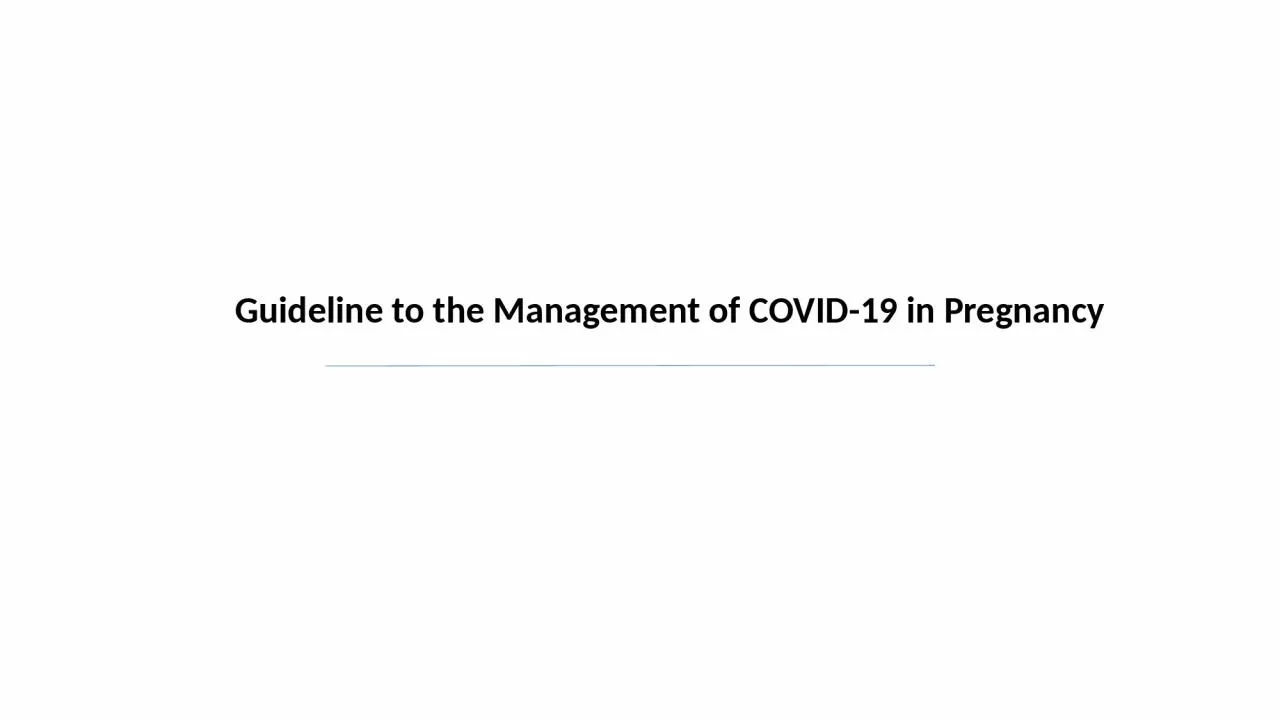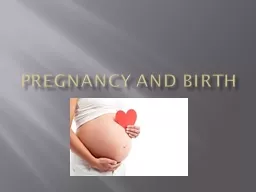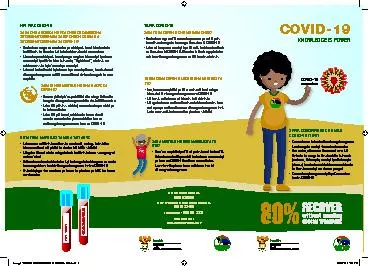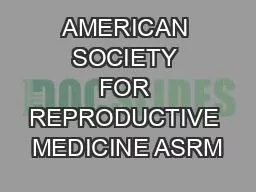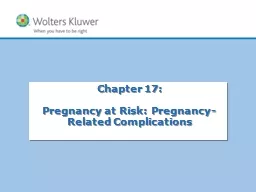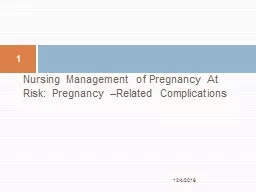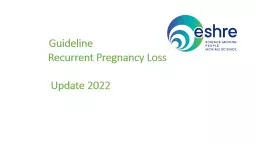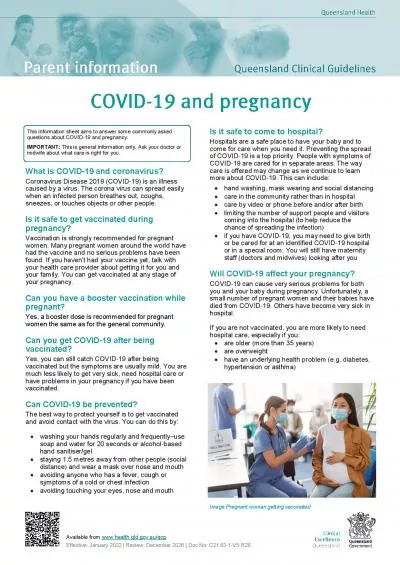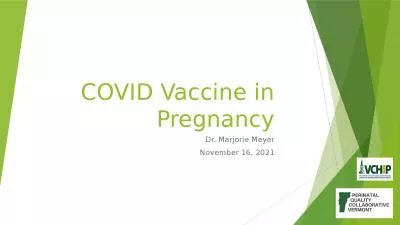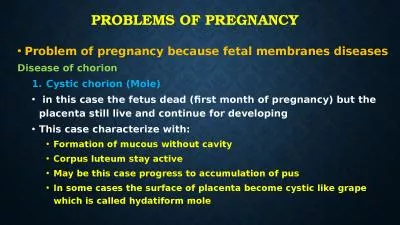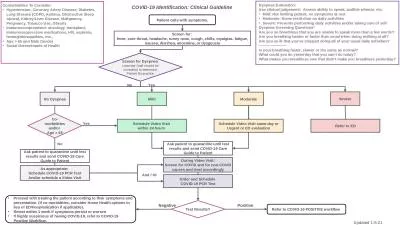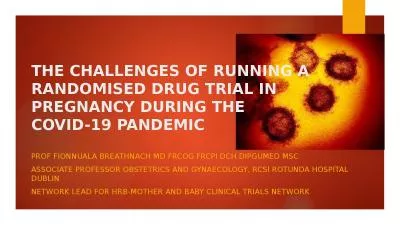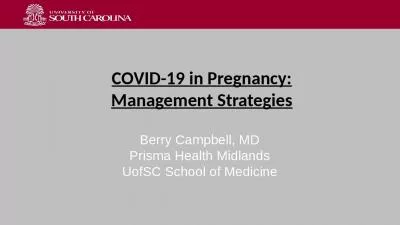PPT-Guideline to the Management of COVID-19 in Pregnancy
Author : berey | Published Date : 2022-06-15
Understanding COVID19 Coronaviruses singlestranded RNA viruses that have a lipid envelope studded with clubshaped projections COVID19 virus binds to the ACE2
Presentation Embed Code
Download Presentation
Download Presentation The PPT/PDF document "Guideline to the Management of COVID-19 ..." is the property of its rightful owner. Permission is granted to download and print the materials on this website for personal, non-commercial use only, and to display it on your personal computer provided you do not modify the materials and that you retain all copyright notices contained in the materials. By downloading content from our website, you accept the terms of this agreement.
Guideline to the Management of COVID-19 in Pregnancy: Transcript
Understanding COVID19 Coronaviruses singlestranded RNA viruses that have a lipid envelope studded with clubshaped projections COVID19 virus binds to the ACE2 receptor to enter the cell. new look. MANAHOT ORIENTATION . September 13,2016. Personal Grooming Guideline for Female. Hai. r. . Clean and dandruff-free. . Well-trimmed and well-combed. . Hair length that is below neck level must be . A new Beginning. Fertilization- when the sperm from a man and the ovum from a woman join together, the genes of the mother and the father combine. Implantation- the attachment of the developing cells to the uterus. KUYA TEKA MAPHILISI YA MINA YATI ARVS • Loko mova mi �kelela swilaveko swo karhi, aminge boheki ku tshama milandza ti philisi ta n’wina tati ARVs e kliniki • Mingaha ti land PATIENT MANAGEMENT AND CLINICAL RECOMMENDATIONS DURING THECORONAVIRUS COVID-19 PANDEMICUPDATE No 11 COVID-19 Vaccination December 16 2020TheASRMCoronavirus/COVID-19TaskForcetheTaskForce1isissuingthisu . . Hyperemesis Gravidarum . Nursing care of hyperemesis gravidarum focuses on. Decreasing trigger factors . Assisting the woman with regaining fluid balance . Obtaining nutrition needed for healthy fetal development.. 12/4/2016. 1. 12/4/2016. 2. HIGH RISK PREGNANCY. Healthy People 2020 Goals: REDUCTIONS. MICH-6: Reduce maternal illness and complications due to pregnancy (complications during hospitalized labor and delivery). . Update 2022. DEFINITION . . Pregnancy loss (miscarriage); . Spontaneous demise of a pregnancy before the fetus reaches viability(until 24 GA). . “Recurrent” pregnancy loss; . loss of two or more pregnancies. - 19 and coronavirus? Coronavirus Disease 2019 (COVID - 19) is an illness caused by a virus. The corona virus can spread easily when an infected person breathes out, coughs, sneezes, or touches obj Dr. Marjorie Meyer. November 16, 2021. Reminders. Please mute yourself upon entry and keep yourself muted while listening.. You are welcome to ask questions throughout the presentation. Feel free to use the chat function, raise your hand, or unmute to ask your question directly.. because fetal membranes diseases. . D. isease of chorion . Cystic chorion (Mole). in this case the fetus dead (first month of pregnancy) but the placenta still live and continue for developing . This case characterize with:. Screen for . Dysp. . nea. . Licensed Staff . should be . consulted . to determine Patient . Disposition. Ask patient to quarantine until test results and send . COVID-19 Care Guide . to Patient. Schedule Video Visit . COVID-19 PANDEMIC. Prof Fionnuala Breathnach MD FRCOG FRCPI DCH . DipGUMed. MSc. Associate Professor Obstetrics and . Gynaecology. , RCSI Rotunda Hospital Dublin. Network Lead for HRB-Mother and Baby Clinical Trials Network. Anil Mathew Philip. AGREE II. Domain 1. Scope and Purpose . Domain . 2. Stakeholder Involvement . Domain . 3. Rigour of Development . Domain . 4. Clarity of Presentation . Domain . 5. Applicability . Berry Campbell, MD. Prisma Health Midlands. UofSC School of Medicine. SMFM Updates June 16, 2020. Management considerations for pregnant patients with Covid 19. Labor and delivery Covid-19 considerations.
Download Document
Here is the link to download the presentation.
"Guideline to the Management of COVID-19 in Pregnancy"The content belongs to its owner. You may download and print it for personal use, without modification, and keep all copyright notices. By downloading, you agree to these terms.
Related Documents

